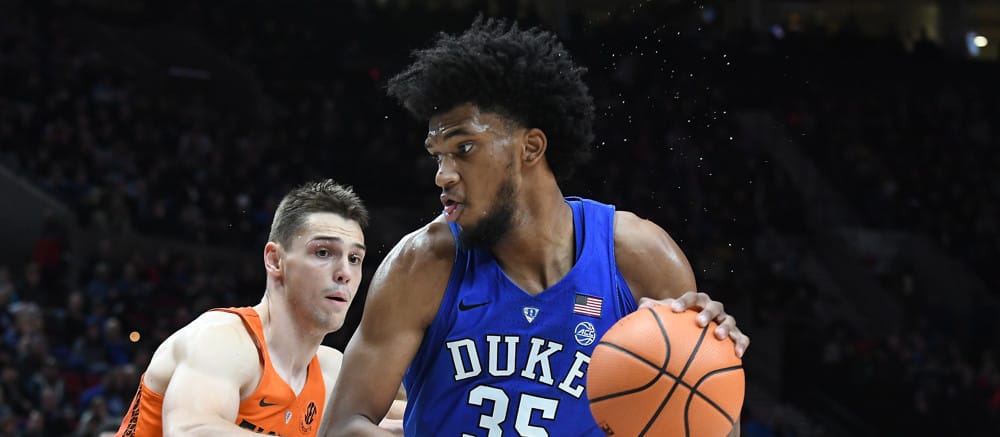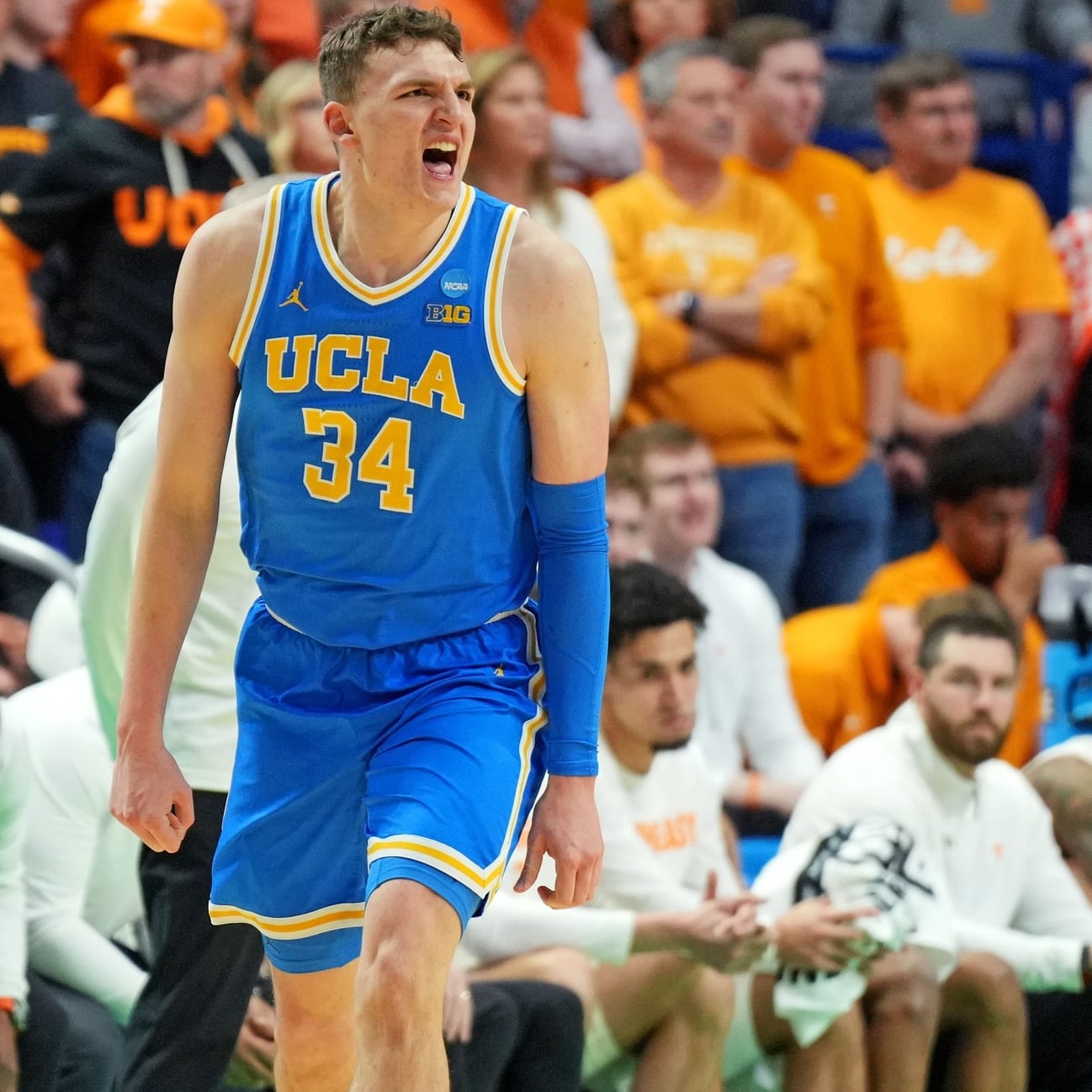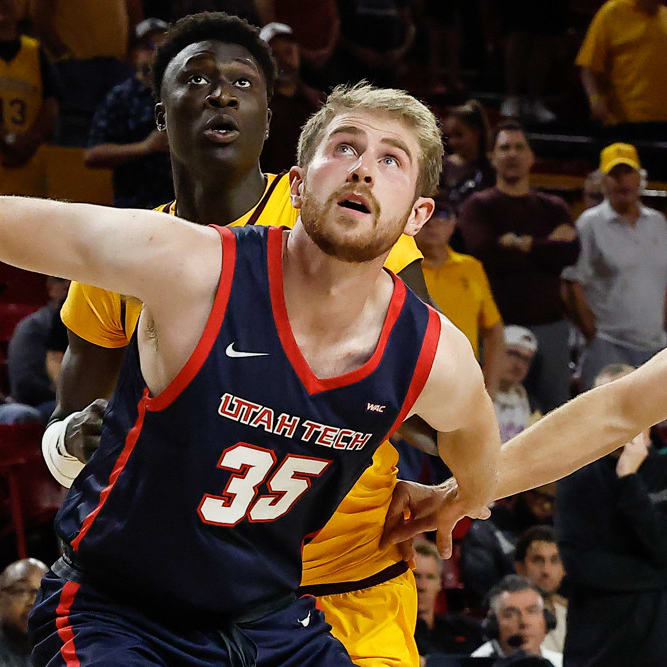What's the best part of writing about college basketball? March Madness. What's the worst part of writing about college basketball? Predicting March Madness. When you write about college basketball, everyone wants advice in March. "You watch all year round, you must know something we don't!" The truth is, I don't always even win the bracket pool among my co-workers or law school friends. Let's be honest; your boss who couldn't name one player on Duke or pick Trae Young out of a lineup has a better shot at winning.
That's what the Madness brings; you're bombarded with statistics, formulas, diagrams, depth charts, and "gut feelings". And, after all that time spent crunching numbers and doing research, your spouse who picked the games by color ended up with a better bracket than you. My wife, who does not watch college basketball, wants our family, including our sons, ages 6 and 4, to fill out brackets this year. I'm absolutely terrified of losing to them. I may never live it down.
But fear not, my friends. There is hope for us yet. All hail, "The NCAA Tournament Gospel". The following five rules have been passed around and collected over the years, reprised, tweaked and edited. They highlight my strategies and theories on picking a successful bracket. I don't always pick the Final Four correctly, but when I do, these are my guidelines. Behold, the Commandments of Madness.
1. Do not pick all four No. 1 seeds in the Final Four. First of
What's the best part of writing about college basketball? March Madness. What's the worst part of writing about college basketball? Predicting March Madness. When you write about college basketball, everyone wants advice in March. "You watch all year round, you must know something we don't!" The truth is, I don't always even win the bracket pool among my co-workers or law school friends. Let's be honest; your boss who couldn't name one player on Duke or pick Trae Young out of a lineup has a better shot at winning.
That's what the Madness brings; you're bombarded with statistics, formulas, diagrams, depth charts, and "gut feelings". And, after all that time spent crunching numbers and doing research, your spouse who picked the games by color ended up with a better bracket than you. My wife, who does not watch college basketball, wants our family, including our sons, ages 6 and 4, to fill out brackets this year. I'm absolutely terrified of losing to them. I may never live it down.
But fear not, my friends. There is hope for us yet. All hail, "The NCAA Tournament Gospel". The following five rules have been passed around and collected over the years, reprised, tweaked and edited. They highlight my strategies and theories on picking a successful bracket. I don't always pick the Final Four correctly, but when I do, these are my guidelines. Behold, the Commandments of Madness.
1. Do not pick all four No. 1 seeds in the Final Four. First of all, what's the fun in that? Secondly, the only year since seeding began in 1979 that four No. 1 seeds made the Final Four was 2008. In fact, three No. 1 seeds have made it just four times in the same year in the modern era. Last year, just two No. 1 seeds made the Final Four.
2. If you don't like a high-seeded squad, pick it to go out as soon as reasonably possible. So, if you don't believe in, say, North Carolina, pick the Tar Heels to lose once they get past the No. 15 seed. You'll be the only one who picks that game correctly, and even if it's an incorrect selection, you wouldn't have had the Heels going that far anyway.
3. There are no bragging rights for picking a No. 10 over a No. 7 seed, or a No. 9 over a No. 8 seed. These are not upsets. All those teams are basically even. Take bigger risks! Even the 11-6 matchup is starting to not feel like an upset anymore. In fact, since 2010, the No. 11 seed has won the matchup more than 50% of the time. In both 2016 and 2017, three of the four No. 11 seeds won the 11-6 matchup. That's a 75% success rate for you math geeks out there.
4. While we're on the subject of upsets, pick at least one 12-5 trap game. Maybe two. Since the NCAA expanded to at least 64 teams, it happens about once every three contests. The upsets have been even more prevalent in recent years. From 2008-2016, No. 12 seeds were 17-19 against the No. 5 squad. Last year, No. 12 Middle Tennessee State beat No. 5 Minnesota.
5. Pick at least one seed lower than a 10 to make the Sweet 16. Last season, Xavier made the Elite 8 as a No. 11 seed. Besides, I'd rather pick the games by which mascot would win in a fight than pick all favorites. As an aside, the Musketeers won't need to summon quite as much magic this season, as they are seeded just a bit higher than a year ago.
Now that you're primed to fill out that winning bracket, let's take a more in-depth look at the regions.
MIDWEST REGION
This region contains a bevy of "Bluebloods", including Kansas, Duke, Michigan State and Syracuse, though the argument can be made that the Orange should not have even made the tournament. They'll have to win a play-in game for the right to face No. 6 TCU. In any event, Kansas may be light in the frontcourt due to the injury to Udoka Azubuike. Even if he can play, there's no telling how healthy the seven-footer really is. That flips the scales to favoring Duke in this region. I also saw a statistic that Coach K is 11-1 all-time vs. Michigan State's Tom Izzo. As such, the Spartans will have their hands full with Bagley and Allen and Carter (oh my!).
The wildcard here is Trae Young. The Sooners have been sliding down the stretch, and Young has not shot the ball well. Still, if he catches fire, a la Steph Curry, he could turn this region upside down. It is far more likely that the Sooners simply bow out to Rhode Island in Round 1, but you just never know.
Auburn should be on upset alert. The Tigers have been bitten by the injury bug, losing four of six to end the season, including a blowout loss to Arkansas in the SEC Tournament. In their first berth since 2003, the Tigers will face a physical, experienced squad in the College of Charleston, which features three players averaging 17 points per game or more. In addition, the 12-5 trap game has some intrigue, as New Mexico State faces Clemson having already beaten an ACC squad (Miami) earlier this season.
SOUTH REGION
The South will be won on the defensive end of the court. Three of the premier defensive squads in the country reside here; Virginia, Cincinnati and Tennessee all make their mark on defense. The top-seeded Cavaliers have one of the best defenses in the history of the modern era, at least according to some metrics. Will this be the year the Hoos finally get the monkey off their back and reach the Final Four?
Arizona likely stands in their way. The Wildcats are not a defensive unit and have had a plethora of distractions of the court, but they are seeded too low at No. 4 and possess arguably the most talented player in the tourney, big man Deandre Ayton. The freshman could be the No. 1 pick in this June's NBA draft. Add in scorer Allonzo Trier, and the Wildcats will pose a legitimate threat to UVA if they can tighten up their defense.
The bottom half of this bracket seems ripe for upsets. The Miami Hurricanes will have their hands full with Loyola-Chicago. Miami could get leader Bruce Brown back from a wrist injury, but even with Brown in the lineup, the 'Canes have been lackluster on the
offensive end all year. Lonnie Walker IV is a lottery pick based on athleticism alone, but he does not take over as much as he should in crucial situations for Miami. The Ramblers are polished, experienced and efficient; Miami has more talent on paper, but as a unit, the Ramblers may just have the edge. They have five players averaging double figures in points and are third in the entire country in team field goal percentage. Oh, and they are fifth in the country in points allowed per game as well.
WEST REGION
The West has an interesting setup, with non-traditional powerhouses Xavier and Gonzaga forming the top two teams at the top of the region. The Musketeers lost five times all season, four of which came to Villanova and Providence; they could not face Providence until the Elite 8, and could not face Villanova until the National Championship. That being said, the Musketeers will face a difficult test in the second round versus either Missouri or Florida State. The Tigers are intriguing due to the return of Michael Porter, Jr. from a back injury. Meanwhile, the Seminoles are one of nine ACC teams that made the big dance. I will have Xavier making an early exit in my bracket.
The winner of this region is much more likely to come from the bottom half. That means North Carolina or Michigan. The two actually played each other earlier this season, with the Tar heels mashing the Maize and Blue by 15. However, the teams are much different than when they met just after Thanksgiving. The Wolverines come into the tournament having won nine-straight contests, including wins over Michigan State and Purdue in succession to win their second-straight Big Ten Tournament.
Upset Alert! Ohio State looked sluggish down the stretch, and the Buckeyes could be primed for an upset in the classic 12-5 trap game versus South Dakota State. Junior forward Mike Daum will be an absolute handful; Daum averaged 23.8 points and 10.4 rebounds for the Jackrabbits this season. He can score from anywhere on the court and is a deadly three-point shooter despite standing at 6-foot-9. OSU's Keita Bates-Diop has had to carry a tremendous load for the Buckeyes this season, and he will likely be tasked with attempting to slow down Daum while also filling up the scoring column in this contest. Watch out for No. 11 San Diego State against No. 6 Houston too. The Aztecs stole the automatic bid in the Mountain West and come into the tourney on a nine-game winning streak of their own.
EAST REGION
The East sets up rather nicely for Villanova. While the Wildcats have been known for an occasional letdown in the first weekend, barring a Collin Sexton explosion in Round 2 versus Alabama they should cruise to the Sweet 16. Wichita State is a weak No. 4 team in my opinion, as is Texas Tech at No. 3. Injuries derailed the Red Raiders' attempt to dethrone Kansas on the Big 12, and Tech lost five of seven down the stretch. Purdue feels like the only real test for 'Nova, as the Boilermakers are balanced, versatile and deep on the offensive end, and long and athletic on the defensive side. Villanova is a machine on offense led by Jalen Brunson, though, who has championship experience.
I'm not quite as high on upsets in this region as the others, though a UCLA-Florida matchup could be interesting if the Bruins get by St. Bonaventure. The 12-5 trap game in this region is not ideal, as West Virginia's full-court pressure is usually jarring for lower seeded, less talented squads. Still, Murray State has won 13 consecutive contests heading into that tilt. Perhaps the Lumberjacks as a No. 14 seed could be an aggressive upset selection over reeling Texas Tech, but Stephen F. Austin has won twice as an underdog since 2014.
FINAL FOUR
Villanova has arguably the easiest path to the Final Four, barring a first-weekend collapse. Virginia will finally exercise its demons and make the Final Four. Michigan is on fire heading into the tournament, and the Wolverines have the three-point shooting to wreak havoc on the opposition. Duke was supposed to be the top team in the country prior to the season, and the Blue Devils have the best frontcourt in college basketball with Marvin Bagley and Wendell Carter. I've got a Duke-Michigan Final Four, harkening back to the days of Hurley, Hill, and Laettner versus the Fab Five. Duke gets the job done, and Coach K cuts down the nets yet again.










































